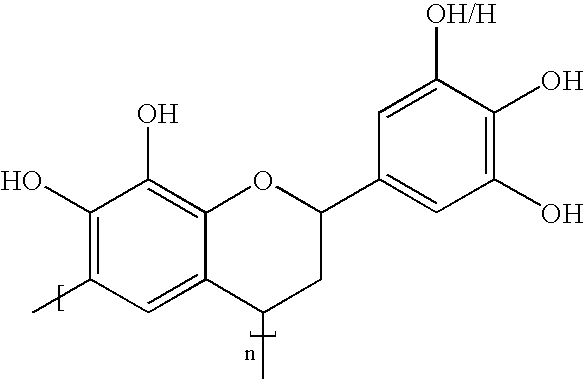Polymeric chelant and coagulant to treat metal-containing wastewater
a technology of coagulant and chelant, which is applied in the direction of treatment using complex/solubilising chemicals, water/sewage treatment by ion exchange, etc. it can solve the problems of wastewater containing heavy metal ions and abrasive solids to meet discharge levels (as mandated by local authorities), and the treatment of wastewater containing heavy metal ions and abrasive solids has been continuously challenging, and other costs aris
- Summary
- Abstract
- Description
- Claims
- Application Information
AI Technical Summary
Problems solved by technology
Method used
Image
Examples
example 1
Preparation of Polyethyleniminodiacetic Acid (PEIDA)
[0018] To a reactor equipped with an overhead stirrer, thermocouple, reflux condenser, nitrogen sparge, addition port, heating mantle, and a pH meter was added distilled water (30 g) and monochloroacetic acid (35.2 g, 0.372 moles). The reactor contents were sparged of air with nitrogen, cooled to 0° C., and then aqueous poly[ethylenimine] (50%, 32 g, 0.372 moles, BASF Lupasol P) was added drop wise over a 10 minute period with cooling. Aqueous sodium hydroxide (50%, 29.1 g, 0.372 moles) was then charged over a 20 minute period with cooling, maintaining the batch temperature at 5-10° C. The batch temperature was increased to 90° C. and, after 20 minutes, a second addition of aqueous sodium hydroxide (50%, 29.1 g, 0.372 moles) was conducted over a 2 hour period as required to maintain a pH of 9-11 into the feed, after which the batch was held at 90° C. overnight. The resulting crude product was precipitated in methanol to wash away ...
example 2
Preparation of Polyethyleniminodiacetic Acid (PEIDA)
[0019] To a reactor setup as described in Example 1 was charged DI water (102 g) and sodium chloroacetate (55.39 g, 0.466 moles). The reactor contents were sparged of air with nitrogen, and then poly[ethylenimine] (20.5 g, 0.466 mole, Nippon Shokubai Epomin SP-200) was added over a 6 minute period, during which the batch exothermed to 43° C. Aqueous sodium hydroxide (50%, 37.28 g, 0.466 moles) was then charged for 1 hour, during which the batch temperature was gradually increased to 90° C. The batch was held at 90° C. for 1 hour, then cooled to room temperature, adjusted to 39.6 wt. % solids with DI water, and used without any further purification.
example 3
Preparation of Polyethyleniminodiacetic Acid (PEIDA)
[0020] To a reactor setup as described in Example 1 was charged DI water (120 g) and poly[ethylenimine] (24.1 g, 0.559 mole, Nippon Shokubai Epomin SP-200). The reactor contents were sparged of air with nitrogen, and sodium chloroacetate (66.4 g, 0.559 moles) was added. The batch was then heated to 75° C. and held for 30 minutes. Aqueous sodium hydroxide (50%, 44.7 g, 0.559 moles) was then charged over a 2 hour period, during which the batch temperature was maintained at 75° C. The batch was held at 75° C. for 90 minutes, then cooled to room temperature, adjusted to 38.2 wt. % solids with DI water, and used without any further purification.
PUM
| Property | Measurement | Unit |
|---|---|---|
| size | aaaaa | aaaaa |
| temperature | aaaaa | aaaaa |
| temperature | aaaaa | aaaaa |
Abstract
Description
Claims
Application Information
 Login to View More
Login to View More - R&D
- Intellectual Property
- Life Sciences
- Materials
- Tech Scout
- Unparalleled Data Quality
- Higher Quality Content
- 60% Fewer Hallucinations
Browse by: Latest US Patents, China's latest patents, Technical Efficacy Thesaurus, Application Domain, Technology Topic, Popular Technical Reports.
© 2025 PatSnap. All rights reserved.Legal|Privacy policy|Modern Slavery Act Transparency Statement|Sitemap|About US| Contact US: help@patsnap.com



